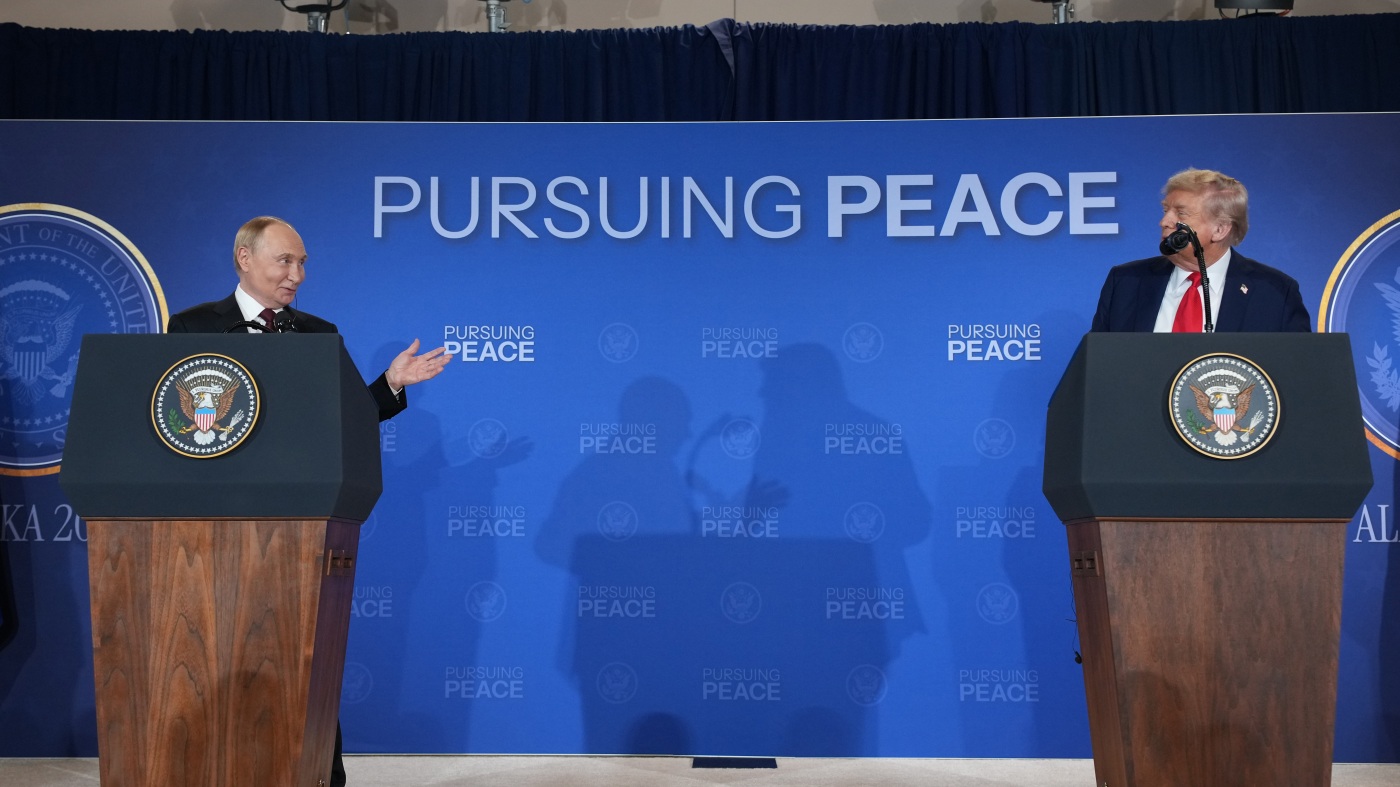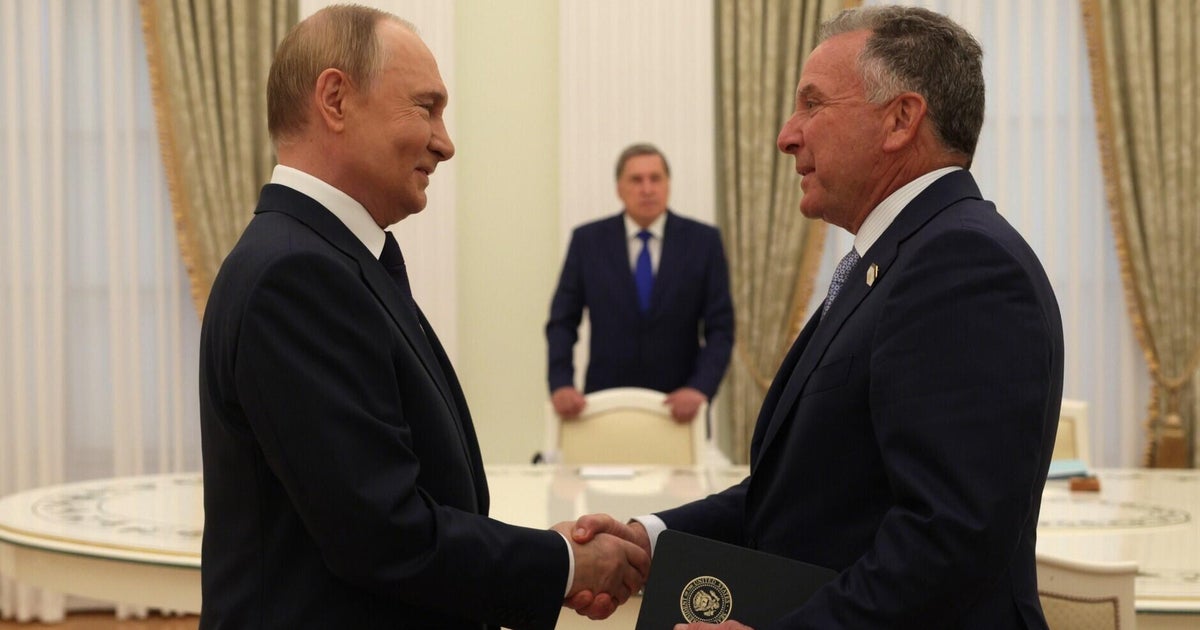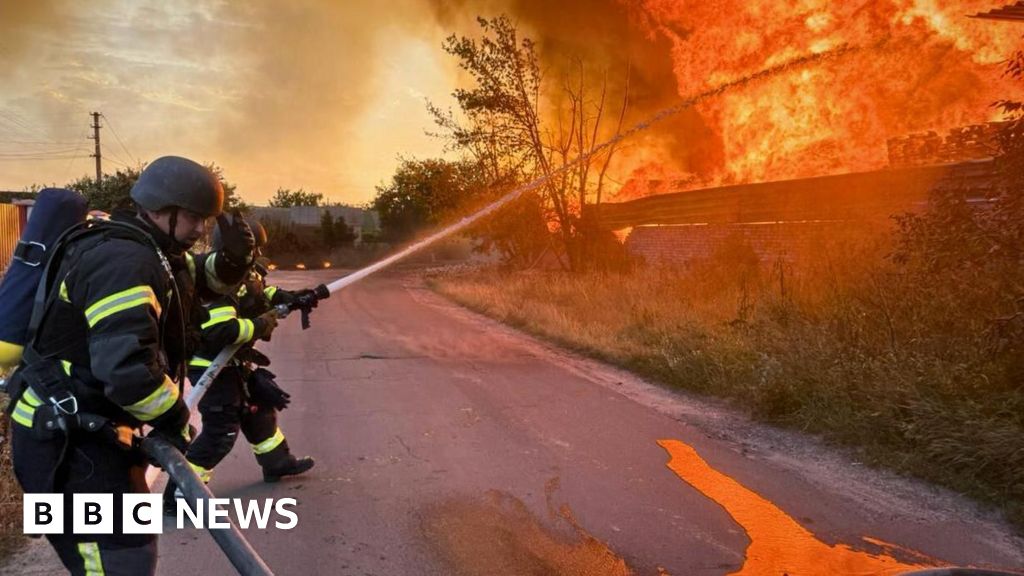Trump's Decision on Ukraine War Raises Concerns

Introduction
After a controversial summit with Russian President Vladimir Putin, U.S. President Donald Trump dropped the long-standing demand for an immediate ceasefire in the war in Ukraine.
Key Details
The demand for a ceasefire had been a bedrock position for the U.S., Ukraine, and their European allies. However, Trump's decision to drop this demand has raised concerns about the future of the war and its impact on the region.
The war in Ukraine has been ongoing since 2014, when Russian-backed separatists took control of Crimea and eastern Ukraine. The conflict has resulted in thousands of deaths and has caused a humanitarian crisis in the region.
In the past, the U.S. and its allies have imposed economic sanctions on Russia for its involvement in the war. However, with Trump's decision to drop the ceasefire demand, there are concerns that this may signal a shift in U.S. foreign policy towards Russia.
Impact
The decision to drop the ceasefire demand has been met with mixed reactions. Some see it as a sign of Trump's willingness to work with Putin and improve U.S.-Russia relations. Others are concerned that it may embolden Russia to continue its aggression in Ukraine.
Additionally, the decision has raised questions about the U.S.'s commitment to its allies and the stability of the region. European leaders
About the People Mentioned
Donald Trump
Donald John Trump, born June 14, 1946, in Queens, New York, is an American businessman, media personality, and politician. He graduated from the University of Pennsylvania’s Wharton School in 1968 with a degree in economics. In 1971, he took over his family’s real estate business, renaming it the Trump Organization, through which he expanded into building and managing skyscrapers, hotels, casinos, and golf courses. Trump gained widespread fame as the host of the reality TV show *The Apprentice* from 2004 to 2015, which helped establish his public persona as a successful entrepreneur. Trump entered politics as a Republican and was elected the 45th president of the United States, serving from 2017 to 2021. His presidency was marked by significant policy actions including tax cuts, deregulation, the appointment of three Supreme Court justices, renegotiation of trade agreements (notably replacing NAFTA with the USMCA), and a focus on immigration control including border wall expansion. He withdrew the U.S. from international agreements such as the Paris Climate Accord and the Iran nuclear deal, and engaged in a trade war with China. His administration’s response to the COVID-19 pandemic was criticized for downplaying the virus’s severity. Trump was impeached twice by the House of Representatives—first in 2019 for abuse of power and obstruction, and again in 2021 for incitement of insurrection—but was acquitted by the Senate both times. After losing the 2020 election to Joe Biden, Trump challenged the results, culminating in the January 6, 2021, Capitol riot. He remains a central figure in American politics, having won the 2024 presidential election and returned as the 47th president in 2025, continuing to promote policies aimed at economic growth, border security, and military strength[1][2][3][4].
Vladimir Putin
Vladimir Putin is the current President of Russia, a position he has held for multiple terms since 2000, with a brief interlude as Prime Minister from 2008 to 2012[1][3]. Born in Leningrad (now Saint Petersburg) in 1952, Putin began his career in the Soviet Union’s security services, joining the KGB in 1975 and rising to the rank of Lieutenant Colonel by the time he left in 1991, following postings in East Germany and Leningrad[4]. After the Soviet Union’s collapse, he transitioned into politics, serving as an adviser to Saint Petersburg Mayor Anatoly Sobchak and later moving to Moscow, where he held various administrative roles under President Boris Yeltsin[6]. Putin was appointed Prime Minister in August 1999 and became acting President when Yeltsin unexpectedly resigned that December[3][6]. He won his first presidential election in March 2000, promising to stabilize Russia’s economy and political system after the tumultuous 1990s[3][7]. During his initial terms, he centralized power, reasserted federal control over Russia’s regions, and curtailed the influence of the country’s oligarchs through legal and economic measures[7]. Putin was re-elected in 2004 but, due to constitutional term limits, stepped aside in 2008, becoming Prime Minister under his successor Dmitry Medvedev, while retaining significant influence[3]. Constitutional amendments later extended presidential terms, and Putin returned to the presidency in 2012[1]. Putin’s time in office has been marked by assertive foreign policy, including military interventions in Syria in support of President Bashar al-Assad and the 2014 annexation of Crimea, which led to international sanctions[1]. Domestically, his tenure has seen increased state control over media, the suppression of political opposition, and constitutional changes consolidating executive authority[1]. In 2022, Russia’s full-scale invasion of Ukraine triggered a major international crisis, further isolating Russia from the West and prompting widespread condemnation[1]. As of 2025, Putin remains a dominant figure in Russian politics, having secured another term in office through constitutional changes that allow him to potentially remain president until 2036[1]. His leadership continues to shape Russia’s domestic trajectory and its role in global affairs, amid ongoing conflict in Ukraine and strained relations with NATO and Western countries[1].
About the Organizations Mentioned
U.S.
The term "U.S." typically refers to the United States government, a complex federal organization established by the Constitution to govern the country through three branches: legislative, executive, and judicial. This separation of powers ensures a system of checks and balances to prevent any one branch from gaining too much control[1][3][8]. **What the U.S. government does:** The government is responsible for creating and enforcing laws, conducting foreign policy, managing national defense, administering justice, and providing public services across diverse sectors including health, education, and infrastructure. It operates through multiple agencies and departments that implement policies and programs affecting citizens’ daily lives[3][6]. **History:** Founded in 1789, the U.S. government’s structure is rooted in the Constitution, which created a federal system balancing power between national and state authorities. Over more than two centuries, it has evolved to meet changing political, social, and technological challenges, exemplified by the enduring publication of the *United States Government Manual* since the New Deal era[3][9]. **Key achievements:** The U.S. government has played a critical role in shaping global democracy, promoting civil rights, pioneering technological innovation, and fostering economic growth. Landmark legislation and executive actions have addressed healthcare reform, environmental protection, and technological advancement. Recent administrations continue to impact sectors like technology, health, and taxation through executive orders and budget reconciliation processes[4][5]. **Current status:** As of 2025, the U.S. government remains a vast and multifaceted institution with approximately thousands of state and local government units documented by the Census Bureau, reflecting its scale and complexity[2]. Contemporary challenges include adapting governance to rapid technological changes, maintaining public trust, and managing policy across federal and state lines. **Notable aspects:** The government’s commitment to transparency is demonstrated through publicly accessible resources like the *Government Manual* and detailed organizational charts. Its federal structure facilitates responsive governance while balancing power through constitutional check
Ukraine
## Overview Ukraine is a sovereign nation in Eastern Europe, with a population of nearly 39 million people and Kyiv as its capital[5]. Since gaining independence from the Soviet Union in 1991, Ukraine has developed a diverse, technology-oriented economy, though it remains in a transitional phase, marked by both promise and significant challenges—particularly since Russia’s full-scale invasion in February 2022[1][7]. ## History Ukraine’s modern history is a complex tapestry of striving for democratic governance, economic reform, and sovereignty. The country’s journey has been punctuated by the 2014 Euromaidan revolution, the annexation of Crimea by Russia, and the ongoing war, which has caused immense human suffering, widespread displacement, and severe damage to infrastructure[2][7]. Despite these adversities, Ukraine has maintained its independence, deepened ties with Western institutions, and pursued a path toward European integration. ## Activities and Key Achievements Ukraine’s government and civil society have shown remarkable resilience. Critical social and health services have been maintained, businesses continue to operate, and children remain in school even amid war[1]. The country has launched ambitious reforms aimed at creating a more competitive, business-friendly economy, focusing on macro-fiscal sustainability, infrastructure rebuilding, labor market activation, and reducing informality[1]. Ukraine has also made strides in technology and innovation, ranking 66th globally in the 2025 Global Innovation Index (15th among upper middle-income economies and 35th in Europe)[4]. Notable achievements include the European Union’s decision to open accession negotiations in June 2024, a milestone in Ukraine’s Euro-Atlantic integration[2]. Ukraine has also advanced its commitment to international justice, taking steps toward full membership in the International Criminal Court and winning a landmark case against Russia at the European Court of Human Rights regarding human rights abuses in Crimea[2]. ## Current Status As of late 2025, Ukraine
European allies
## Overview The term "European allies" typically refers to the collective network of countries in Europe that cooperate closely on matters of security, economics, and governance, often in partnership with the United States and Canada. While there is no single organization named "European Allies," the most prominent embodiment of this concept is the **North Atlantic Treaty Organization (NATO)**, an intergovernmental military alliance that includes 30 European countries, the United States, and Canada[1]. Additionally, the **European Union (EU)** and the **Council of Europe** represent other key pillars of European cooperation, though their mandates extend beyond security to include economic integration, human rights, and rule of law[3]. ## What the Organization Does NATO operates as a system of collective security, where member states pledge mutual defense in response to an attack by any external party—a principle enshrined in Article 5 of its founding treaty[1]. The alliance conducts joint military exercises, intelligence sharing, and crisis response operations. Beyond defense, NATO engages in training missions, counterterrorism, and cyber defense, reflecting its adaptation to modern security challenges. The EU, meanwhile, focuses on economic integration, regulatory harmonization, and fostering a single market, which has profound implications for business and technology across the continent[3]. The Council of Europe promotes democracy, human rights, and legal standards, complementing NATO's security mandate[3]. ## History NATO was established in 1949, in the early years of the Cold War, to counter Soviet influence and ensure the security of Western Europe[1][3]. Its founding members included the US, Canada, and 10 Western European nations. The EU traces its origins to the European Coal and Steel Community (1951) and the Treaty of Rome (1957), which laid the groundwork for economic and political union[3]. The Council of Europe was founded in 1949 to uphold human rights and democratic principles[3]. ## Key Achievements - **









